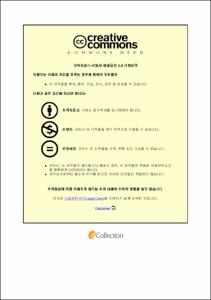제주넙치양식장의 사료형태(MP&EP)에 따른 항생제 이용 실태 비교
- Abstract
- This study compared and analyzed antibiotic practices of the selected Jeju flounder farms using two different types of feeds. Total of 24 different antibiotic products were employed in 2015, the total quantity of the product and the total quantity based on their purities from the moist pellet(MP) based farms were 1.5 times more than those from the extruded pellet(EP) based farms. The quantity was still approximately 1.7 times higher in the farms using MP when the comparison was made based on the purity criteria. The findings were put through relation analysis which confirmed that there is a significant difference in the quantity of antibiotics used between the farms using different type of feed. In terms of utilization rate of individual antibiotics according to the purity criteria, the rate was the highest for amoxicillin in the farms using MP and for oxytetracycline in the farms using EP. The quantity of antibiotics used per month was higher in farms using MP except in February and December; the quantity was the highest in August in the farms using MP and in September in the farms using EP. There were 7 farms in each of the two groups of flounder farms using different type of feed, and when the comparison was made between the flounder farm with the highest annual quantity of use of antibiotics and the one with the lowest, the farms MP showed markedly higher quantity of use than the farms using EP. The quantity of antibiotics used according to the different type of feed was then analyzed in terms of the way the agents were delivered to the fish. When the quantity of antimicrobial agents used per year according to the purity criteria was compared, the oral administration group (amoxicillin, florfenicol) and the bath administration group exhibited the highest quantity of use in the farms using MP while the injection administration group exhibited the highest quantity of use in the farms using EP. The results were also put through relation analysis which confirmed that there is a significant difference in the tendency of antibiotics chosen by individual farms according to the type of feed used.
- Issued Date
- 2016
- Awarded Date
- 2016. 8
- Type
- Dissertation
- Publisher
- 부경대학교 글로벌수산대학원
- Affiliation
- 부경대학교 글로벌수산대학원
- Department
- 글로벌수산대학원 양식학과
- Advisor
- 배승철
- Table Of Contents
- Ⅰ. 서론 3
Ⅱ. 재료 및 방법 6
1. 어가선정 6
2. 조사방법 8
3. 통계분석 9
Ⅲ. 결과 10
1. 사용된 항생제 분류 10
2. 연간 총 사용량 비교 12
1-1 제품군 사용 비교 12
1-2 제품군 사용량 유의성 분석 15
2-1 순수 항생제(역가)량 비교 16
2-2 항생제 순도기준 사용량 18
2-3 항생제 순도기준 사용 비율 19
2-4 순수 항생제(역가)량 유의성 분석 21
3. 사료형태에 따른 월별 항생제 사용량 비교 22
1-1 제품별 사용량 월별 추세 22
4. 사료형태에 따른 어가별 항생제 사용량 비교 26
1-1 어가별 사용량 비교 26
5. 사료형태에 따른 용도별 항생제 사용량 비교 30
1-1 경구투여용 항생제 Ⅰ (Amoxicillin) 항생제 순도기준 사용량 비교 32
1-2 경구투여용 항생제 Ⅰ (Amoxicillin) 월별 사용량 추세 비교 34
1-3 경구투여용 항생제 Ⅰ (Amoxicillin) 유의성 분석 35
2-1 경구투여용 항생제 Ⅱ (Florfenicol) 항생제 순도기준 사용량 비교 36
2-2 경구투여용 항생제 Ⅱ (Florfenicol) 월별 사용량 추세 비교 38
2-3 경구투여용 항생제 Ⅱ (Florfenicol) 유의성 분석 39
3-1 약욕용 항생제 항생제 순도기준 사용량 비교 40
3-2 약욕용 항생제 월별 추세 비교 42
3-3 약욕용 항생제 유의성 분석 43
4-1 주사용 항생제 항생제 순도기준 사용량 비교 44
4-2 주사용 항생제 월별 추세 비교 46
4-3 주사용 항생제 유의성 분석 47
Ⅳ. 고찰 48
Ⅴ. 요약 52
Ⅵ. 참고문헌 53
- Degree
- Master
- Files in This Item:
-
-
Download
 제주넙치양식장의 사료형태(MP&EP)에 따른 항생제 이용 실태 비교.pdf
기타 데이터 / 1.02 MB / Adobe PDF
제주넙치양식장의 사료형태(MP&EP)에 따른 항생제 이용 실태 비교.pdf
기타 데이터 / 1.02 MB / Adobe PDF
-
Items in Repository are protected by copyright, with all rights reserved, unless otherwise indicated.